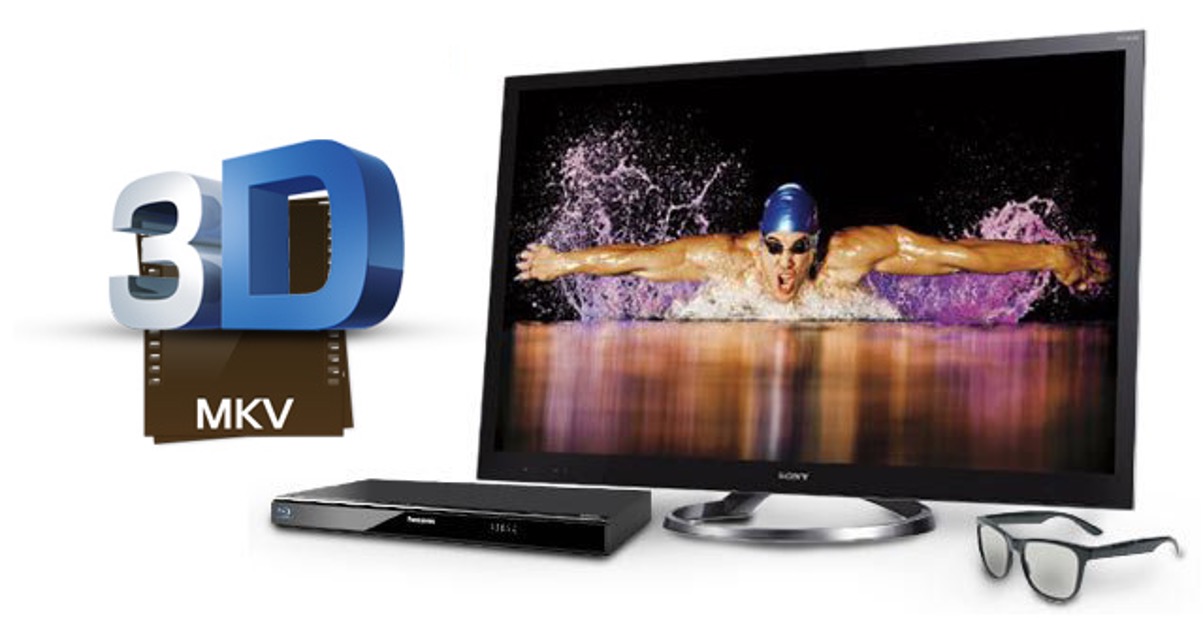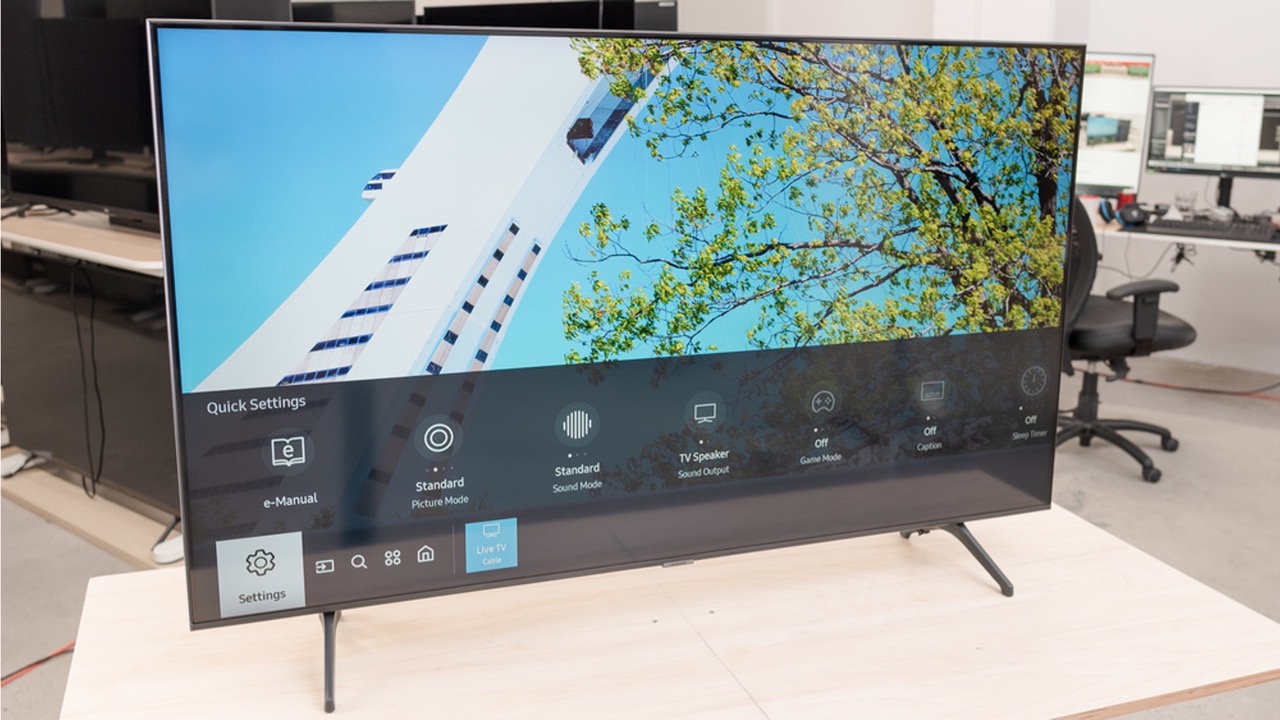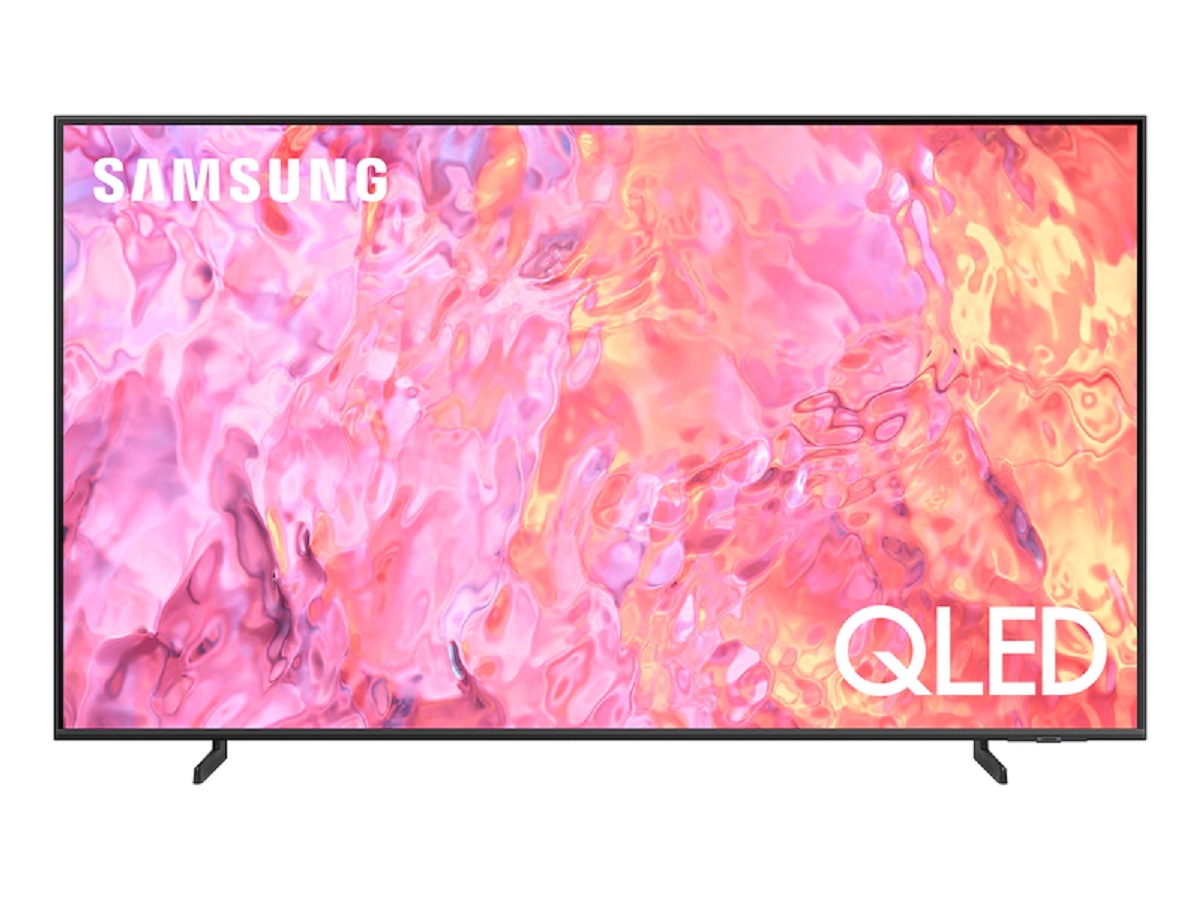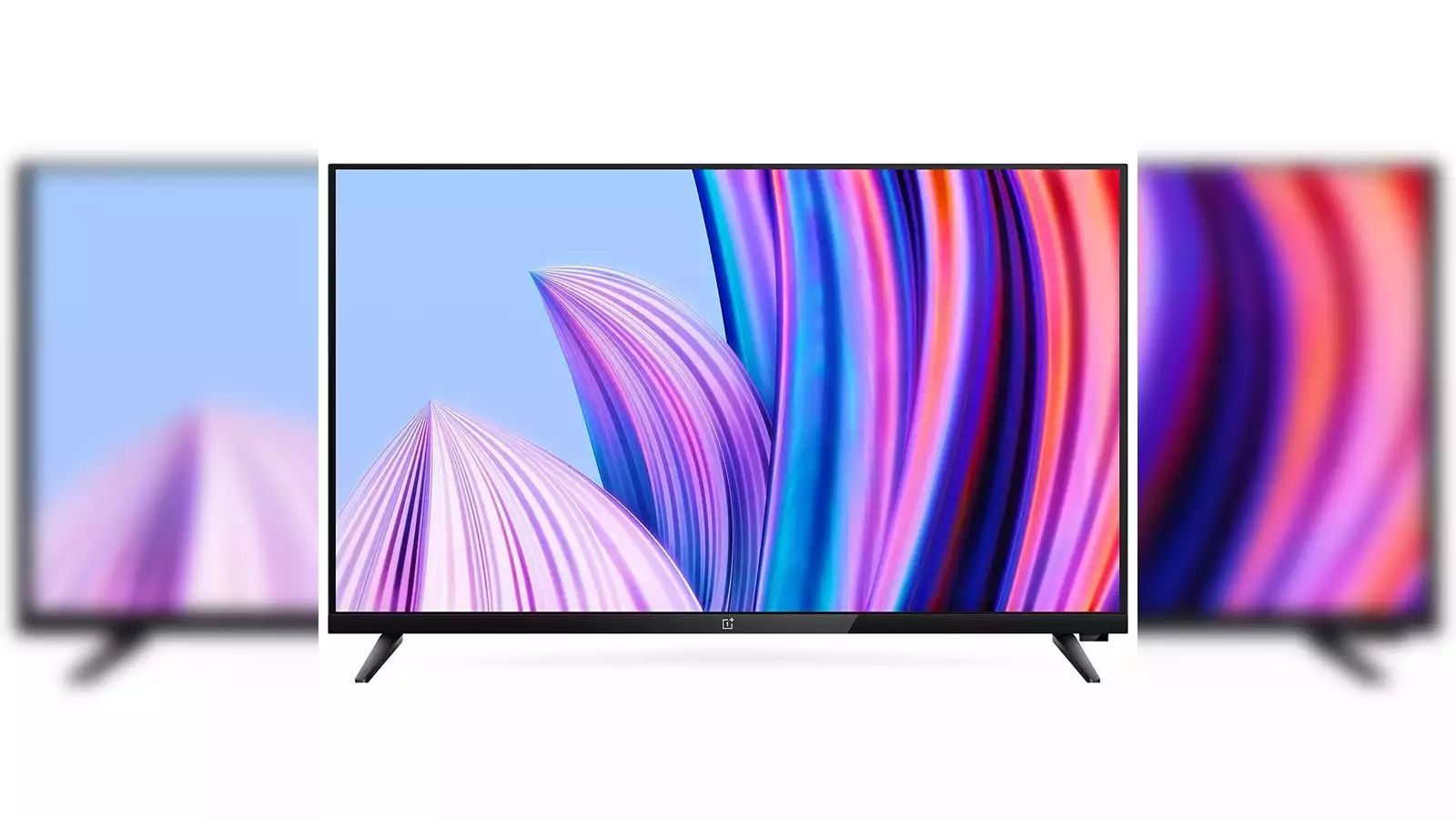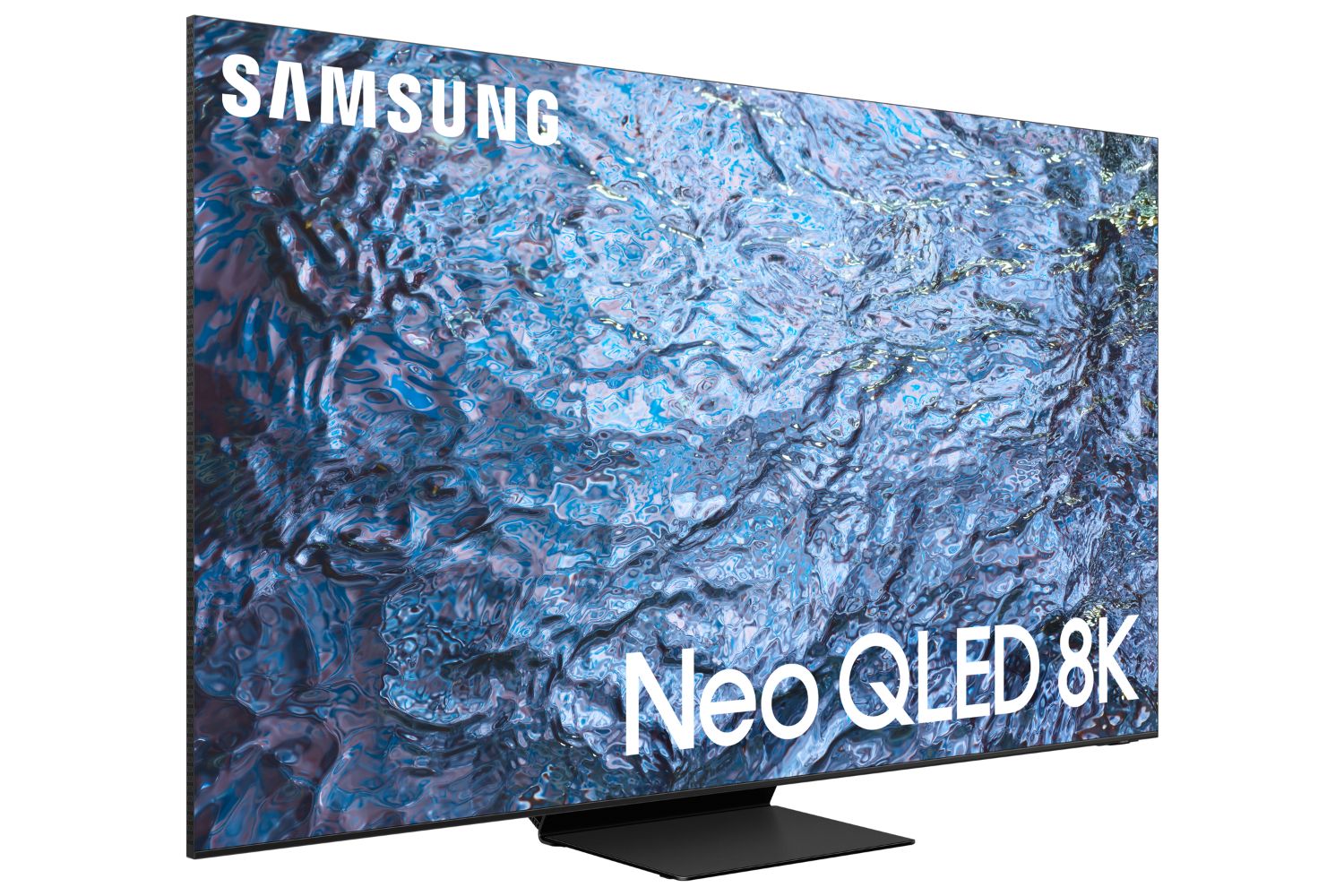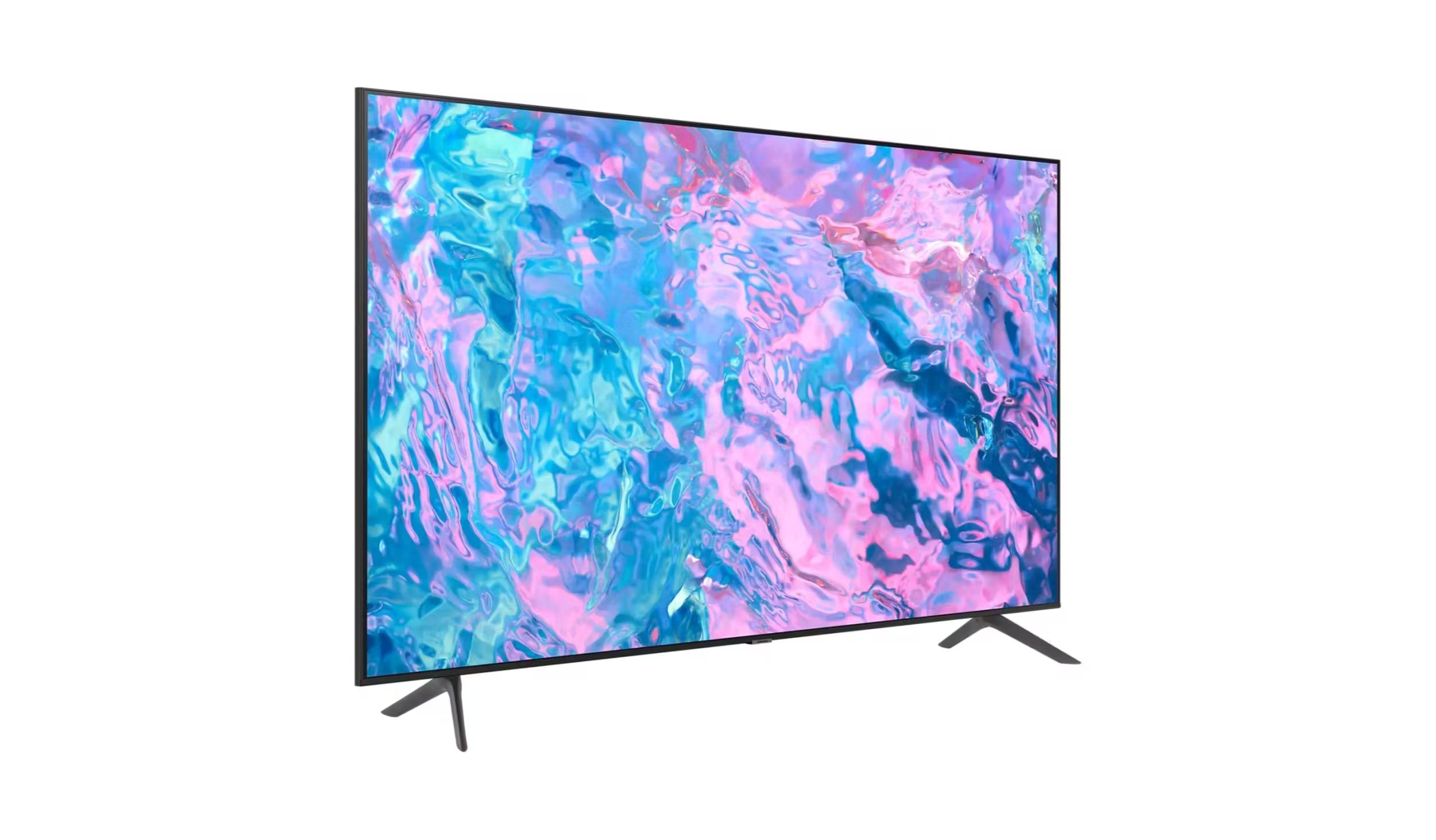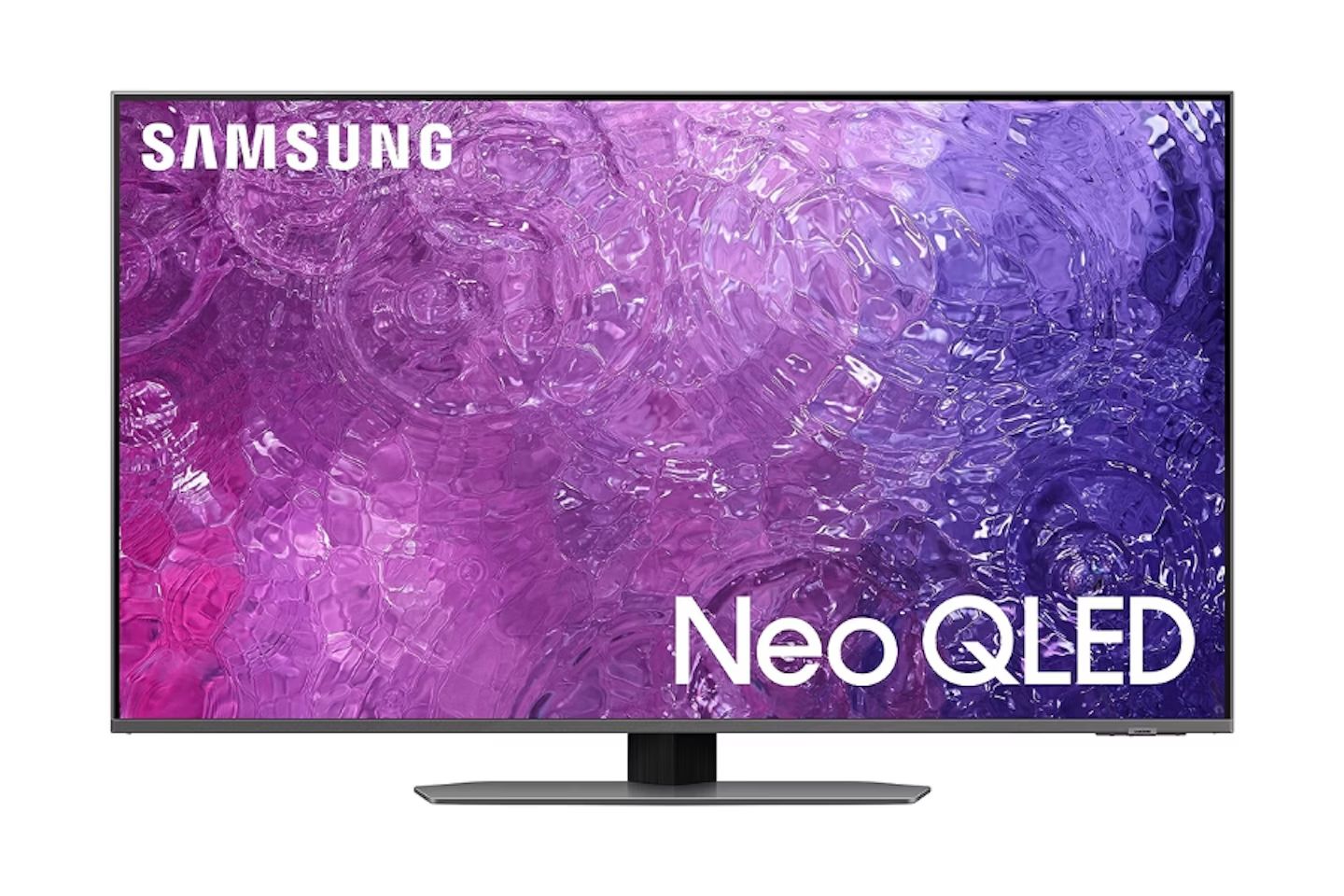Introduction
Welcome to the world of entertainment brought to life with the revolutionary technology of 3D LED TVs. Over the years, television technology has progressed at an incredible pace, and one of the most exciting advancements has been the introduction of three-dimensional viewing. With 3D LED TVs, you can immerse yourself in a whole new dimension, where images leap off the screen, colors come alive, and every detail is enhanced.
With the increasing popularity of 3D movies in cinemas, it was only a matter of time before this technology found its way into our homes. 3D LED TVs offer an incredible viewing experience that goes beyond regular high-definition televisions. Whether you’re watching your favorite movies, sports events, or even playing video games, a 3D LED TV can truly transport you into the heart of the action, making you feel like you’re part of the on-screen world.
But what exactly is a 3D LED TV, and how does it work? In this article, we will delve into the world of three-dimensional television, exploring the technology behind these marvels of modern entertainment. We’ll also discuss the different types of 3D LED TVs available, the benefits they offer, and any limitations you need to be aware of before making a purchase decision.
So, grab your 3D glasses and get ready to step into a new dimension of entertainment as we explore the fascinating world of 3D LED TVs.
What is 3D LED TV?
A 3D LED TV is a television that uses advanced technology to create a three-dimensional viewing experience. Unlike traditional televisions that display images in two dimensions, a 3D LED TV adds depth and realism by projecting images that appear to pop out of the screen. This creates a more immersive and engaging viewing experience, making you feel like you’re part of the action.
LED stands for Light Emitting Diode, which refers to the type of display technology used in these TVs. LED TVs offer a number of advantages over other display technologies, such as LCD (Liquid Crystal Display), including better color accuracy, higher contrast ratios, and improved energy efficiency.
So, how does a 3D LED TV actually create the illusion of depth? It does this by displaying two separate images, one for the left eye and one for the right eye, and then using special 3D glasses to separate and direct these images to the corresponding eye. The brain then combines these separate images to create a sense of depth and dimension.
Most 3D LED TVs use either active 3D or passive 3D technology. Active 3D TVs require battery-powered 3D glasses that rapidly alternate between displaying images for the left and right eyes, synchronized with the TV’s refresh rate. On the other hand, passive 3D TVs use lightweight, polarized glasses that filter the separate images for each eye, allowing them to view the 3D content.
It’s worth noting that not all content is available in 3D. To enjoy 3D programming, you’ll need to have access to 3D movies, shows, or games that have been specifically created or converted for 3D viewing. Some 3D LED TVs also offer the ability to convert regular 2D content into a simulated 3D effect, although the level of immersion may not be as impressive as true 3D content.
Now that we have a better understanding of what 3D LED TVs are and how they work, let’s explore the different types of 3D LED TVs available in the market.
How Does 3D LED TV Work?
3D LED TVs create the illusion of depth by displaying two separate images simultaneously, one for the left eye and one for the right eye. The technology behind these TVs works in conjunction with specially designed 3D glasses to ensure that each eye sees the correct image, resulting in a stereoscopic 3D effect.
The process of creating a 3D image begins with a 3D source, such as a 3D Blu-ray disc or a 3D broadcast. This source contains two separate video streams, one for the left eye and one for the right eye. The 3D LED TV then takes these two streams and displays them alternately on the screen at a rapid rate. This is known as the refresh rate, which is typically 120Hz or higher for 3D content.
To view the 3D content, you’ll need to wear a pair of 3D glasses. There are two main types of 3D glasses used with 3D LED TVs: active glasses and passive glasses.
Active glasses are battery-powered and feature liquid crystal lenses that can open and close rapidly. These glasses synchronize with the TV’s refresh rate and alternate between blocking the left eye and the right eye from seeing the corresponding image on the screen. This creates the illusion of depth as each eye only sees the image intended for it.
Passive glasses, on the other hand, use polarized lenses to filter the light from the 3D TV. These glasses do not require batteries or any electronic components. The TV screen is fitted with a polarizing filter, and the glasses separate the polarized images for each eye, allowing them to view the 3D content.
Once you put on your 3D glasses, the TV’s display will emit light at different angles for the left and right eye, ensuring that each eye receives the correct image. This creates a stereoscopic effect, where the brain interprets the images as having depth and dimension.
It’s important to note that not all 3D LED TVs are compatible with both types of glasses. Some models are specifically designed for active 3D glasses, while others only work with passive glasses. Before purchasing a 3D LED TV, make sure you understand the type of glasses that are compatible with the TV to ensure a seamless 3D viewing experience.
Now that we understand how 3D LED TVs work, let’s explore the different types of 3D LED TVs available in the market and the benefits they offer.
Types of 3D LED TV
When it comes to 3D LED TVs, consumers have a variety of options to choose from. The two main types of 3D technologies used in these TVs are active 3D and passive 3D. Each has its own set of characteristics and considerations, offering different viewing experiences for users.
Active 3D: Active 3D technology requires the use of battery-powered glasses with liquid crystal lenses. These glasses rapidly alternate between displaying images for the left and right eyes in synchronization with the TV’s refresh rate. One advantage of active 3D is the higher resolution and greater depth perception it can provide. The glasses also tend to be lighter and more comfortable to wear. However, one downside is that the glasses require batteries, which may need to be replaced or recharged regularly. Additionally, active 3D glasses can be more expensive than passive glasses.
Passive 3D: Passive 3D technology uses lightweight, polarized glasses that filter the separate images for each eye, allowing them to view the 3D content. One significant advantage of passive 3D is the lower cost of the glasses, as they do not require batteries or any electronic components. Passive glasses are also generally more comfortable to wear for extended periods and are less likely to cause eye strain. However, passive 3D may provide a slightly lower resolution and less depth perception compared to active 3D. Some people may also experience more noticeable flickering or cross-talk with passive 3D.
In addition to the different 3D technologies, there are also variations in the screen sizes, resolutions, and smart features offered by different 3D LED TVs. Screen sizes typically range from smaller sizes perfect for bedrooms or kitchens, to larger sizes ideal for home theaters or living rooms. Resolutions can vary from Full HD (1080p) to Ultra HD (4K) or even 8K in the latest models, offering stunning picture quality and clarity.
Moreover, many 3D LED TVs come with smart features, allowing users to access apps, stream online content, and connect to other devices such as smartphones or gaming consoles. These smart features enhance the overall viewing experience and provide access to a wide range of entertainment options.
When selecting a 3D LED TV, consider your preferences, budget, and the intended purpose of the TV. If you’re a movie enthusiast looking for the ultimate viewing experience with higher resolution and depth perception, an active 3D TV might be the right choice. On the other hand, if you prioritize affordability, comfort, and ease of use, a passive 3D TV may be more suitable.
Now that we have explored the different types of 3D LED TVs available, let’s move on to discussing the benefits they offer.
Benefits of 3D LED TV
3D LED TVs offer a range of benefits that enhance the viewing experience and bring entertainment to a whole new level. Here are some of the key advantages of owning a 3D LED TV:
- Immersive Viewing Experience: One of the main advantages of 3D LED TVs is the ability to immerse yourself in a three-dimensional world. With 3D content, you feel like you’re part of the action, with images appearing to jump off the screen and surround you. This level of immersion can make movies, sports events, and video games more engaging and exciting.
- Enhanced Visual Depth and Detail: 3D LED TVs add depth and dimension to images, making them appear more lifelike and realistic. The depth perception created by the 3D effect allows you to appreciate fine details and textures that may not be as noticeable in regular 2D viewing.
- Improved Color Accuracy and Contrast: LED technology provides vibrant and accurate colors, enhancing the visual experience of 3D content. The high contrast ratios of LED TVs ensure that dark scenes are rich in detail, while bright scenes are vivid and realistic.
- Versatility and Compatibility: While 3D content is not as widespread as 2D content, most 3D LED TVs offer the ability to watch regular 2D content as well. This means you can enjoy your favorite shows, movies, and games in both 3D and 2D, providing versatility and compatibility with a wide range of content.
- 3D Conversion: Some 3D LED TVs have the ability to convert regular 2D content into a simulated 3D effect. While not as impressive as true 3D content, this feature can still add depth and dimension to your viewing experience, giving a new perspective to your favorite movies or shows.
- Entertainment Options: With a 3D LED TV, you can access a variety of 3D content, including 3D movies, shows, and games. Many streaming platforms and Blu-ray discs offer a selection of 3D titles, allowing you to explore a whole new world of entertainment.
Whether you’re a movie enthusiast, a gamer, or simply someone looking to elevate their TV viewing experience, a 3D LED TV can provide an immersive and visually stunning journey into the world of three-dimensional entertainment.
Now that we have explored the benefits of 3D LED TVs, let’s move on to discussing the limitations and considerations you should keep in mind when considering a 3D LED TV purchase.
Limitations of 3D LED TV
While 3D LED TVs offer an enhanced viewing experience, there are certain limitations and considerations to be aware of before making a purchase:
- Limited Content Availability: One of the main limitations of 3D LED TVs is the limited availability of 3D content. While there is a decent selection of 3D movies, shows, and games available, it is still not as extensive as the 2D content library. This means you may have fewer options when it comes to finding 3D entertainment.
- Additional Equipment: To enjoy the full 3D experience, you will need additional equipment, such as 3D glasses. While some 3D LED TVs come with a few pairs of glasses, it may be necessary to purchase additional glasses for family or friends who want to join in the 3D viewing experience. These glasses can add to the overall cost of owning a 3D LED TV.
- Eye Fatigue and Discomfort: Extended periods of 3D viewing may cause eye fatigue and discomfort for some individuals. The use of active 3D glasses that rapidly alternate between images can contribute to this fatigue. It is recommended to take breaks and limit the duration of 3D viewing to prevent any discomfort.
- Compatibility and Standardization: Not all 3D LED TVs are compatible with both active and passive 3D glasses. Some models are designed specifically for one type of technology. Therefore, it’s important to ensure that the 3D glasses you are using are compatible with your TV. Additionally, there is a lack of standardization in 3D technology, which can lead to compatibility issues between different brands of 3D equipment.
- Price: 3D LED TVs, especially those with advanced features, can be more expensive than their non-3D counterparts. The inclusion of 3D technology and other enhancements can increase the overall cost of the TV. It’s important to consider your budget and the value you place on the 3D viewing experience when making a purchase decision.
- Loss of Brightness: When viewing 3D content on most 3D LED TVs, there is a slight loss of brightness compared to regular 2D viewing. This is due to the polarization or shuttering technology used in the glasses. While the difference may not be significant, it is something to keep in mind if you value bright and vibrant visuals.
Considering these limitations will help you make an informed decision when it comes to purchasing a 3D LED TV. It’s important to weigh the benefits and limitations to determine if a 3D TV is the right choice for your entertainment needs and preferences.
Now that we have discussed the limitations of 3D LED TVs, let’s address the question of whether investing in a 3D LED TV is worth it.
Is a 3D LED TV Worth It?
Deciding whether a 3D LED TV is worth the investment depends on your personal preferences, entertainment needs, and budget. There are several factors to consider when determining the value of a 3D LED TV:
Level of Immersion: If you are someone who enjoys an immersive and visually captivating viewing experience, a 3D LED TV can provide just that. The sense of depth and realism offered by 3D content can transport you into the on-screen world, making movies, sports events, and games more engaging and exciting.
Available 3D Content: Consider the availability and variety of 3D movies, shows, and games that you can access. While the selection may not be as extensive as 2D content, if you have a passion for 3D entertainment and are willing to seek out compatible content, a 3D LED TV can offer a unique and enjoyable viewing experience.
Budget and Priorities: It’s essential to consider your budget and priorities. 3D LED TVs, especially those with advanced features, can be more expensive than traditional 2D TVs. If you are willing to invest in the added 3D experience and prioritize the immersion and enhanced visuals it provides, then a 3D LED TV may be worth it for you.
Eye Comfort: Some individuals may experience eye fatigue or discomfort when viewing 3D content for extended periods. If you are sensitive to 3D effects or prone to eye strain, it’s important to consider whether the potential discomfort outweighs the benefits of a 3D LED TV for you.
Future-proofing: While 3D technology is not as prevalent as it once was, it still has its place in the entertainment industry. If you anticipate that more 3D content will become available in the future or if you want to future-proof your entertainment setup, investing in a 3D LED TV may be a good decision.
Ultimately, the decision of whether a 3D LED TV is worth it comes down to personal preference and individual circumstances. If you enjoy the immersive experience of 3D content and are willing to invest in compatible content and accessories, a 3D LED TV can provide a unique and visually stunning viewing experience. However, if 3D entertainment is not a high priority for you or if you have budget constraints, a traditional 2D TV may be a more practical choice.
Now that we have considered the factors involved in determining the worth of a 3D LED TV, let’s summarize the key points discussed in this article.
Conclusion
3D LED TVs have revolutionized the way we experience entertainment, offering a whole new level of immersion and visual depth. With the ability to bring images to life and make you feel like you are part of the action, 3D LED TVs provide a captivating viewing experience that can enhance your enjoyment of movies, sports events, and video games.
Throughout this article, we have explored what 3D LED TVs are and how they work. We discussed the two main types of 3D technology – active and passive – and highlighted their respective advantages and considerations. Additionally, we examined the benefits of owning a 3D LED TV, such as the immersive viewing experience, enhanced visual depth, improved color accuracy, and versatility of entertainment options.
However, we also explored the limitations of 3D LED TVs, including the limited availability of 3D content, the need for additional equipment like 3D glasses, the potential for eye fatigue, the lack of standardization, and the higher cost compared to non-3D TVs. These factors should be taken into account when deciding if a 3D LED TV is worth the investment.
In the end, the worth of a 3D LED TV is subjective and dependent on individual preferences, entertainment needs, and budget. If you value the immersive viewing experience, have access to 3D content, and are willing to invest in compatible equipment, a 3D LED TV can provide a unique and visually stunning entertainment experience. However, if 3D entertainment is not a top priority or if budget constraints are a concern, a traditional 2D TV may be a more practical choice.
Whether you choose to dive into the world of 3D entertainment or stick with a traditional 2D viewing setup, the advancements in LED technology continue to deliver exceptional picture quality and visual experiences. Regardless of the type of TV you decide on, the goal remains the same – to enjoy your favorite movies, shows, and games in a way that brings you joy and entertainment.









